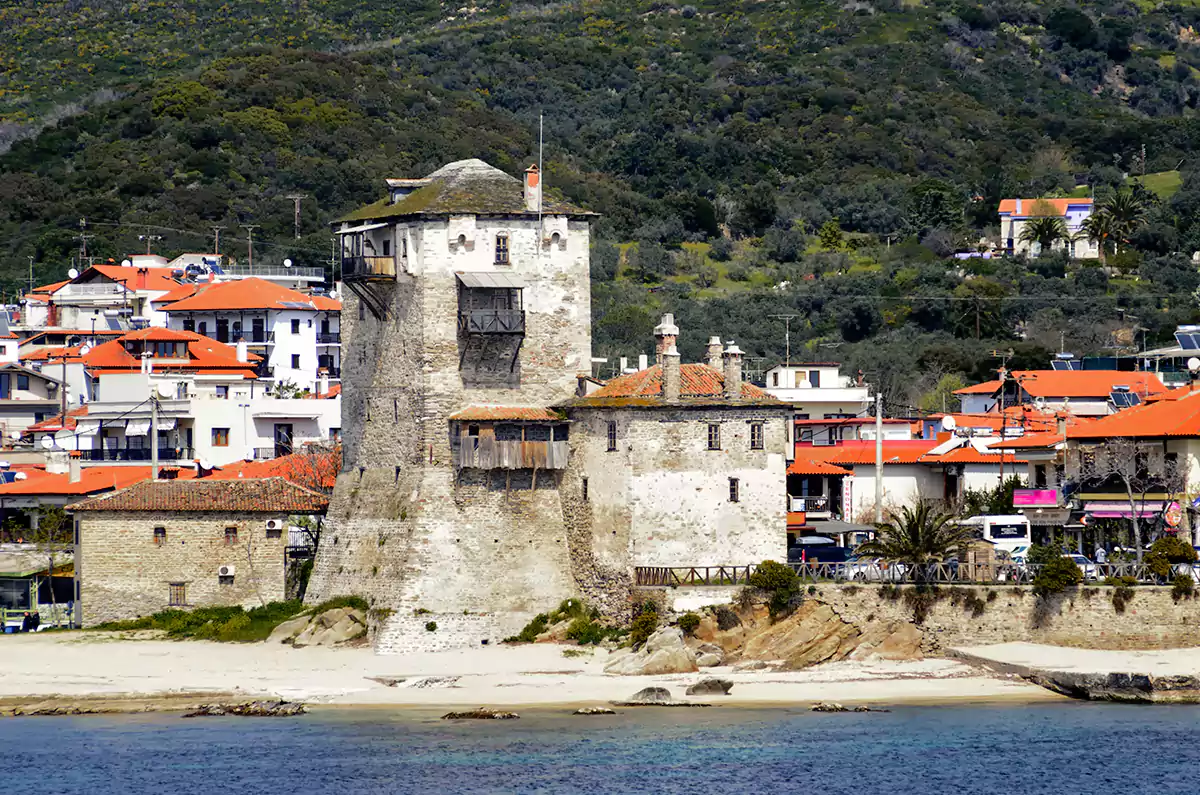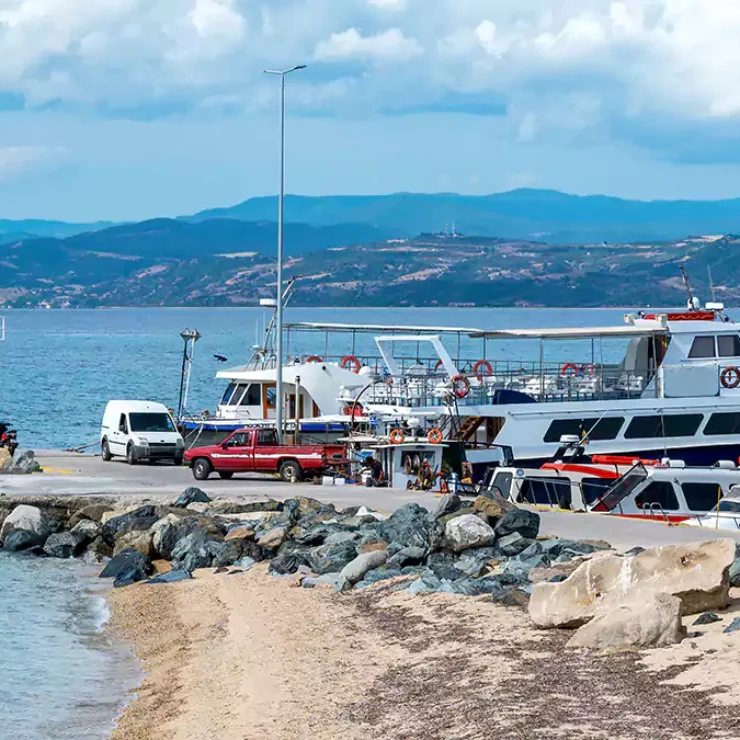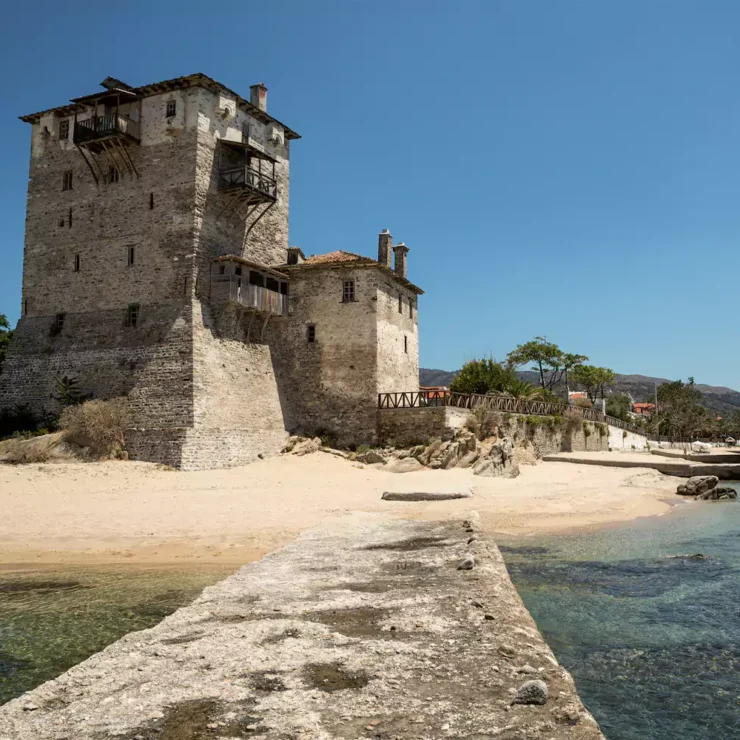Τhe Tower of Ouranoupoli
Discover a Byzantine building which originally belonged to the Vatopedi Monastery. According to certain historical sources it was built circa 1344 but there are references that it is probably even older. During the earthquake of 1585 the tower was seriously damaged and in 1858 renovation works began, resulting in its current form. After 1922 the refugees from Propontida who came to the area inhabited the tower, while in 1928 its tenants were the English-Australian couple Lock who were responsible for its maintenance, while offering social work to the residents of the area. Today the complex of the Tower belongs to the Ministry of Culture of Greece and a museum operates on its premises with exhibitions being organized from time to time.
Monastery of Zygos (also known as Fragokastro).
This ancient monastery was founded in the middle of the 10th century and was destroyed shortly before 1198. It is located about 2 kilometers east of Ouranoupoli, just outside the borders of Mount Athos. Visitors can admire parts of the great representation of the Annunciation, a full-length representation of Saint Nicholas, while there are also marble inlays from the 11th century. Other findings that have been brought to light include three 11th century lead bulls, a medal with an engraved representation of Saint Paraskevi, book covers, 11th and 12th century coins. etc., while the excavation and restoration works are still in progress.
Medieval Cemetery at Ierissos
Discover a necropolis counting over 600 recently discovered graves- the site was not known until 1973. The cemetery was used from Archaic to Roman times. It extends in the coastal area of Ierissos with many types of graves in at least two or three layers parallel to the coastline, in which adults and children were buried in the same place according to ancient customs. The graves are rectangular, with or without decoration. In the tombs there are findings similar to the burial customs found in other cities of Macedonia and Thrace.
Ancient Stageira & Grove of Aristotle
Stageira is the ancient city where Aristotle, the so-called father of Western philosophy was born in 384 BC. It is probably the most important historical site of Halkidiki, located on the Liotopi Peninsula near the current Olympiada. There, one can also visit the Grove of Aristotle, a unique thematic park, in which there are interactive instruments that work based on the natural laws mentioned in the writings of Aristotle.
The church of Agios Stefanos in Arnaia
Arnaia is a mountain village of Halkidiki with a very typical and unique traditional architectural style. Among its various beautiful buildings, stands the metropolitan church of Agios Stefanos. While it functions normally for the needs of the faithful, at the same time it is also a visitable area of historical and archaeological interest because it is built on ipriceless antiquities which are almost entirely visible to visitors.





